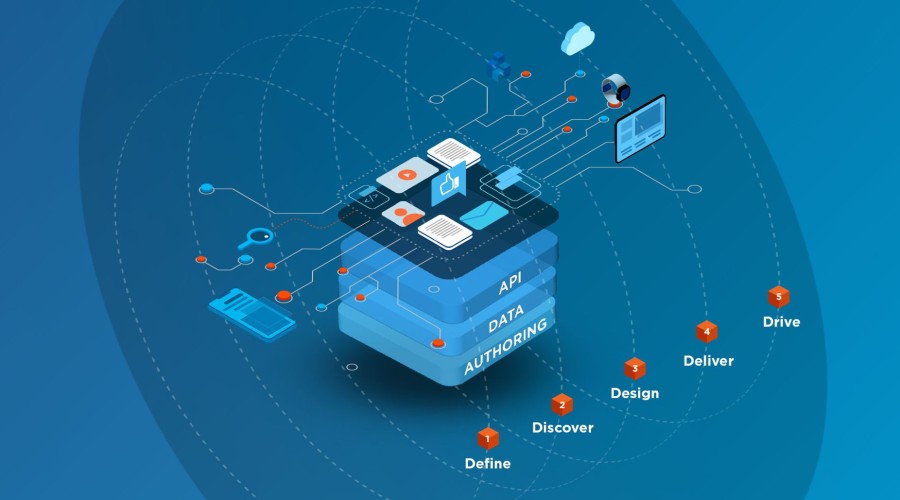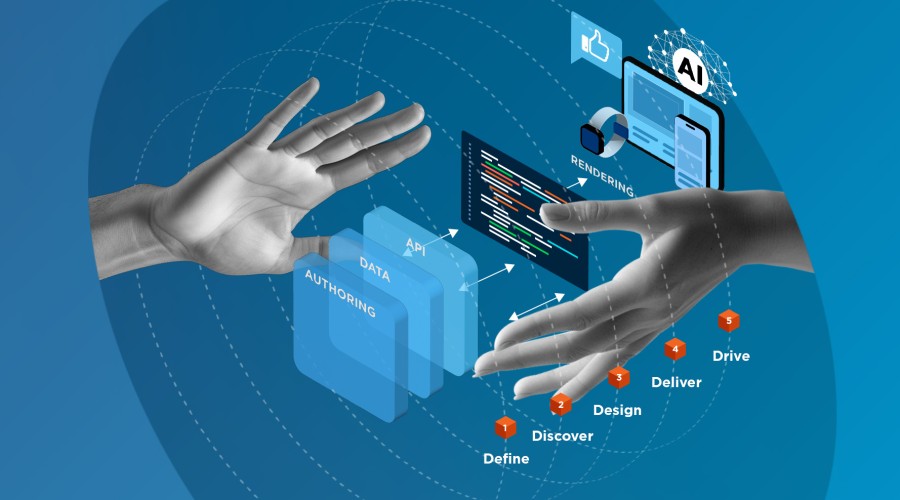The content management ecosystem has developed at an incredible pace over the last two decades. This rapid progression means many users are left unaware of the challenges and opportunities that lie ahead with the latest updates to market leading content management systems (CMS) like Drupal.
To address this, the Cyber-Duck team pulled together an all-star line up of specialists for our latest webinar The Future of Drupal to explore what the future holds with the recent release of Drupal 9. Read our summary of the insights from each panellist - or here’s the full recording below.
Watch the full length Future of Drupal Webinar to get the full insights from our technology and UX experts.
Why it’s time to upgrade
The session kicked off with an overview of Drupal 9 from Tim Lehnen, CTO of the Drupal Association, who explored the platform’s capability, compatibility and the power of the community.
Drupal is the market leader in creating engaging digital experiences. With the launch of Drupal 9, users are witnessing the latest community-focused development process. Following the release of Drupal 8 five years ago, Drupal decided to embrace a model of continuous innovation where new features were added every six months which enhanced the UX.
Drupal is open-source, and Tim outlined the power of community and transparency that this brings to the development process. The community helps support bug fixes and security updates and by contributing to this, users and partners are able to help shape the roadmap for the product. This all contributes to the fine-tuned performance and scalability of the system with new tools like Big Pipe offering incredible improvements on page-render time.
In addition to the technical features, Drupal also offers total cost ownership. This means there is no recurring cost to keep the software whilst also providing a competitive service provider ecosystem which makes it easy to find cost-effective support.
97% of the top 200 projects are compatible with Drupal 9 today, so there’s no need to delay upgrading from Drupal 8.
Nailing the migration
Alan Botwright has over 13 years of experience with Acquia and Drupal, working to unlock business benefits for customers through open-source. With his unique experience and insight, Alan talked us through the process of upgrading and migrating on Drupal.
While the upgrade from Drupal 7 to Drupal 8 saw challenges for users, the upgrade from Drupal 8 to Drupal 9 has been designed to be seamless. With around 67% of users still using Drupal 7, the migration to Drupal 9 means unlocking a real treasure trove of features which are capable of delivering the digital experiences that establish a competitive advantage for your business.
The internal case for upgrading has never been stronger. Alan notes that these improvements in digital experience are especially pertinent now with the ongoing health crisis as people become more reliant on digital to fulfil their needs and online performance has to be engaging and reliable. Services like Acquia help smooth this transition - automating the process and reducing the cost.
A more powerful authoring experience
Cyber-Duck’s Technical Lead, Duncan Worrell, opened his section of the discussion with an observation about how the development process has changed. Once upon a time, the goal of web development was to simply launch a website. Now we know this is just the start. Websites should evolve, grow, become transactional and improve over time.
Drupal’s latest updates reflect these changing goals. Drupal 7 was excellent at launching a website nine years ago - but as the web and nature of the internet evolved, it became cumbersome to quickly update and refresh content. Drupal 8 and 9 empowers content creators to make, experiment and develop their site over time using a headless approach for a world where personalisation and a seamless experience are key. This frees developers to add new functionality and design elements and empowers marketers to deliver an omni-channel experience.
Drupal 9 includes a series of new features designed to improve the editing experience. Including a single powerful editor built in to core. Layout Builder allows content editors and site builders to easily and quickly create visual layouts for displaying content that is fully customisable across different pages; Workflow allows users to define workflow states for each Drupal entity type; Media Library enhances the media list with additional features to easily access existing media assets. All of these features empower editors to refresh the look and feel of a website, address accessibility issues and ensure the experience is meeting the needs of visitors.
UX & Content Strategy
As important as it is to upgrade your CMS platform to benefit from the latest features, performance and security, there are other major considerations at play. Meera Rao, a UX Strategist at Cyber-Duck spoke about the importance of the upgrade as an opportunity to meet user expectations and create an engaging user experience - whilst also maintaining a stable and secure platform.
You can’t design something that’s right for your users if you don’t know who they are. For various reasons, most brands make assumptions about their users without data and research. Meera underlined the importance of conducting quantitative research and combining this with analytics to gain relevant insights and test your hypotheses to ultimately solve user pain points. Meera also explained the importance of designing for accessibility and that when upgrading your website, you should take an opportunity to assess how users with certain disabilities engage with your website.
The content strategy for a website is fundamental for a good user experience. A strong content strategy will assess 10,000 web pages and tell web teams what content is performing and whether the content needs to be refactored, removed or if new content is required. Integral to a content strategy is content design. Layouts, UI and interfaces must meet user needs and must be easily accessed by a variety of users. A good technique for increasing accessibility is to use design elements consistently across a site, so users can know what to expect simply from a page layout.
“Be ruthless” is Meera’s final piece of advice for developers to think about and if in doubt, always remember MoSCoW (Must have, Should have, Could have, and Won't have), which will allow you to remove any items that don’t meet this criteria.
Facilitating safe online experiences
In our final section, Luke Potter, Director of Cyber Security at SureCloud, shared his insight on the importance of online security and how Drupal is working hard to facilitate safe and secure experiences online.
Keeping products and software up-to-date is cyber-security 101 and your approach to Drupal should be no different. Drupal 9 has a much smaller code-base than its predecessors, which has drawn a lot of attention from the security community as the open-source approach means this community can contribute to creating the safest possible ecosystem.
Luke highlighted some of the most common security weaknesses many organisations face. Administrator interfaces are highly-targeted and despite being password protected, they often don’t have two-factor authentication enabled. A great fix for this is to only allow administrator log-ins from locations you trust, like from a corporate VPN. Best practice web-server headings are also common weaknesses, which can be easily solved through Drupal 9.
Summary
A large percentage of the global population has some form of disability that will impact how they access digital devices; in the UK, 20% of people do have a form of impairment. In the UK, the law changed Sep 2019. Now public body websites must meet W3C double AA standards as to ensure they are usable as possible for those with disabilities.
This is important because at least 20% of the population have some form of disability or long term illness with many more suffering from temporary disabilities. This in turn can impact how they engage with websites and apps. For example some users use screen readers to ask them to read web pages.
If your Drupal website has obscured content this could lead to accessibility issues and a strong indication that proves that customers will bounce off your website to a competitor if they don't find what they are looking for.
It has never been a better time to assess your CMS upgrade project both from a development, technology, security and accessibility perspective. With the release of Drupal 9 is the culmination of two decades of advancement in website development. If you’re not sure how to get there, please download our free Drupal 9 briefing.
Your CMS has never been so accessible, adaptable or capable of accelerating business results online. To find out more about Drupal 9, upgrading, download Cyber-Duck’s free Get Ready for Drupal 9 whitepaper and get in touch today to find out how we can help.




